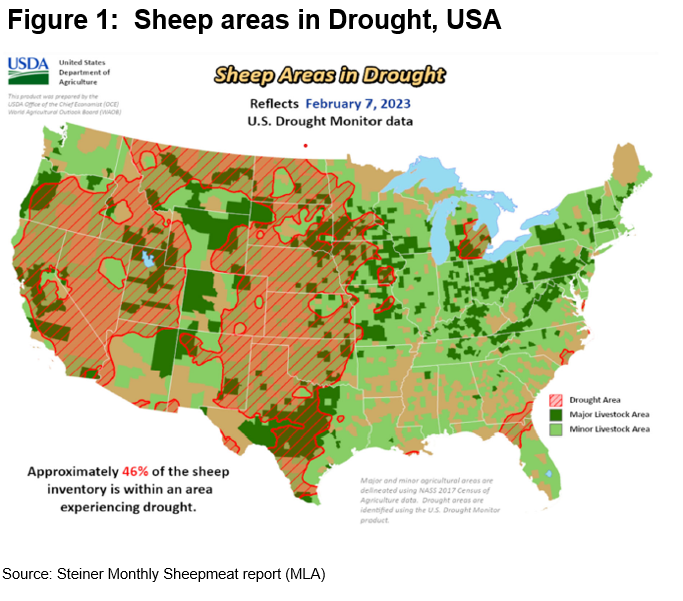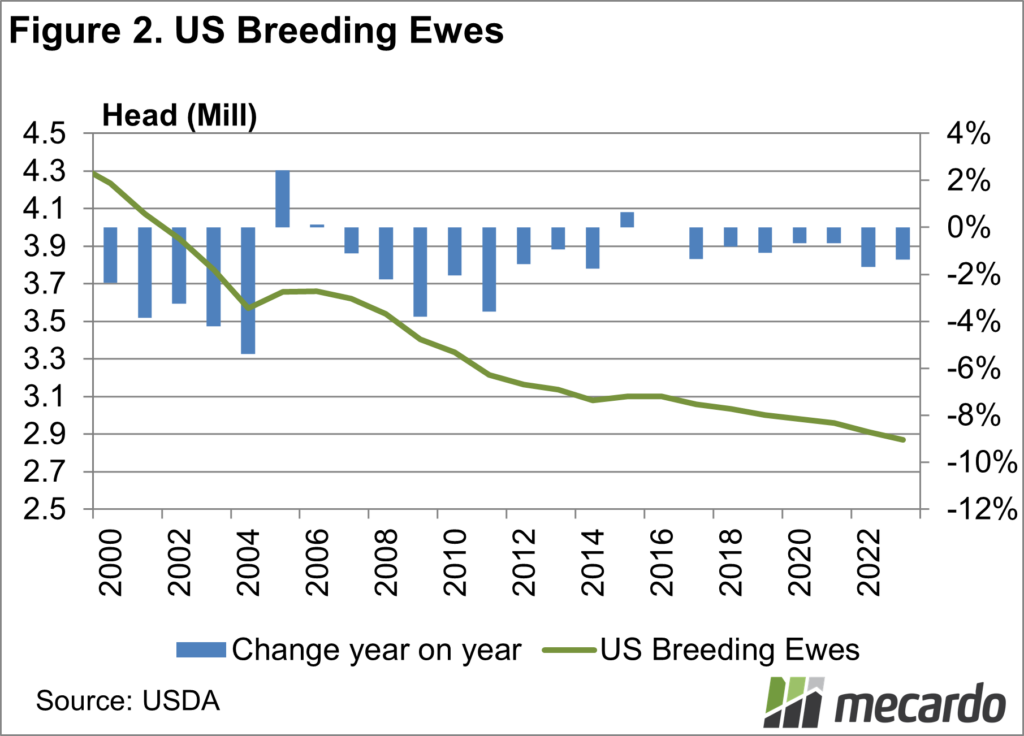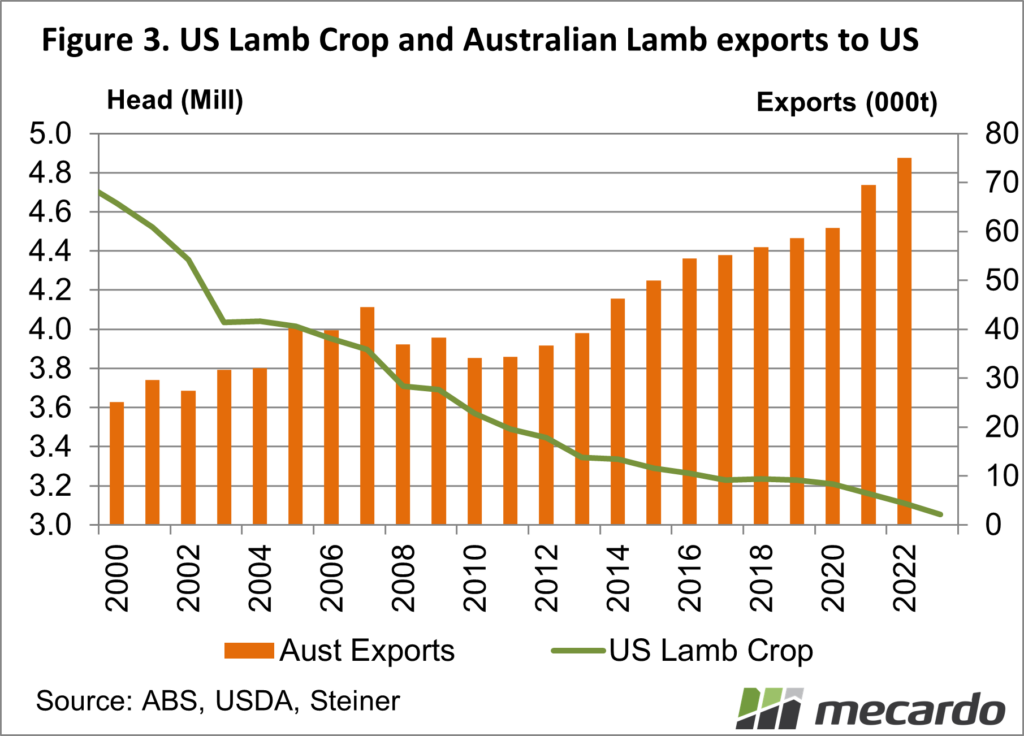Farmers don’t seem to like sheep much in the USA. Unlike here, where sheep are grazed on some of the best pastures in the country, in the US they are confined to more marginal areas. The US flock and lamb crop is still shrinking, but it’s good news for Australian lamb producers.
Figure 1 is copied out of the monthly Steiner US sheep and lamb report prepared for Meat and Livestock Australia (MLA). It shows the USDA data for major sheep areas in the US, along with the areas currently declared in drought.
With around 46% of the US sheep inventory currently in drought, it’s little wonder the flock and lamb crop are shrinking. Figure 2 shows the US breeding ewe inventory, and the declining flock is not all because of drought. The US sheep flock has been in pretty much constant decline for half a century.
Since 2000 the US breeding ewe flock has shrunk by 32% as cropping and cattle have encroached on sheep country. The latest USDA survey puts the breeding ewe flock at 2.87 million head on January 1, 2023, down 1.7% on 2022. To put this perspective, Australia’s latest breeding ewe number, from 2021, was 37.6 million head. The US breeding ewe flock is 7.6% the size of the Australian equivalent.
With declining breeding ewe numbers comes a falling lamb crop. Figure 3 shows the US lamb crop falling in line with breeding ewes. There has been no increase in productivity either, with the last five years showing 1.07 lambs produced for every breeding ewe. The rate was the same back in the 90s.
Lamb is a small part of the American diet, and it is more of a luxury item, with beef, chicken, and pork staples on American dinner tables. Regardless, with 332 million people eating a little bit of lamb, more than 3 million lambs are required. Hence the growth in Australian lamb exports to the US, as their lamb crop declines.
Last year saw record lamb exports to the US, as our lamb was cheap compared to that in the US, and economic conditions were good. The drought and a worsening economy have seen live lamb prices decline in the US, impacting demand for our exports early in 2023, which has in part driven the lower saleyard values this summer.
What does it mean?
Drought in the US has seen declining numbers of cattle and sheep, and while cattle will recover, the sheep side is not as certain. Even the record lamb prices of 2021-22, when little 20kg lambs were making over $300 per head in our terms, haven’t encouraged producers to hold onto stock.
The declining US flock and lamb crop will continue to support our exports to the US. If and when economic conditions improve, demand should help soak up the increasing supplies produced here.
Have any questions or comments?
Key Points
- The US sheep and lamb flock continued to decline in 2022.
- Declining US lamb production has seen increases in imports from Australia.
- The lower US flock should see support for our prices in the medium term.
Click on figure to expand
Click on figure to expand
Click on figure to expand
Data sources: USDA, Steiner, MLA, ABS, Mecardo















